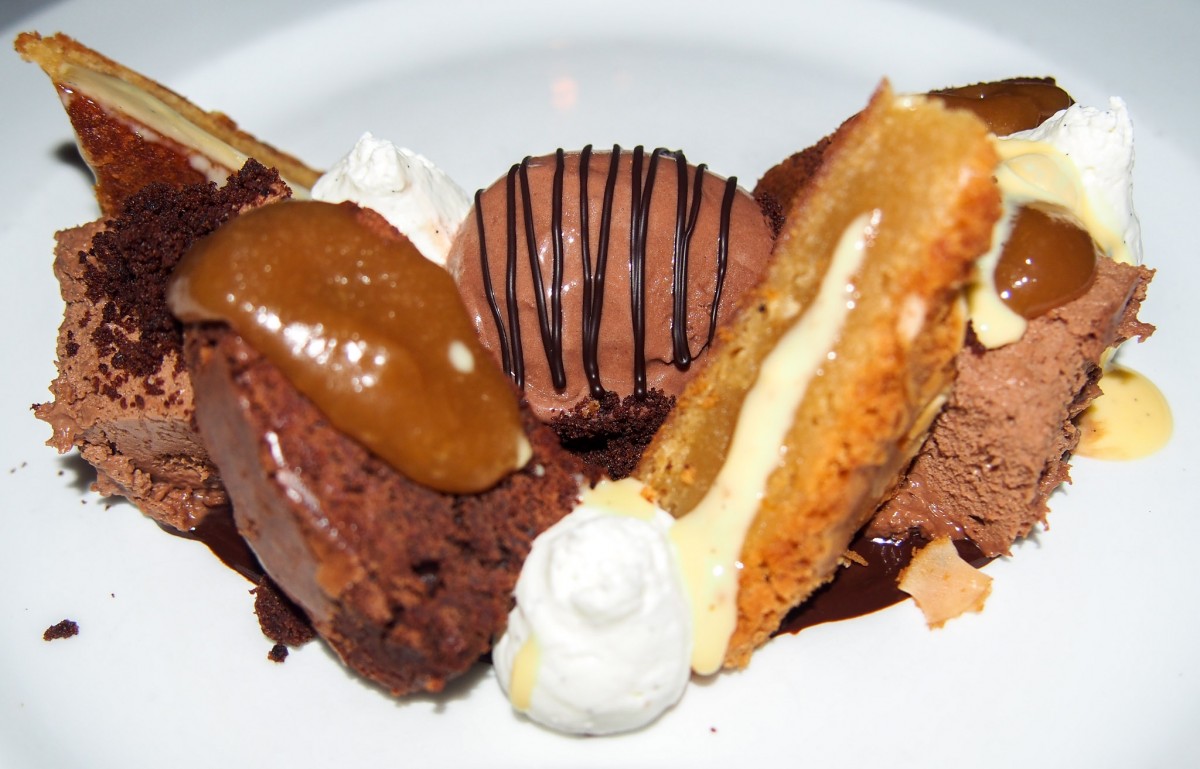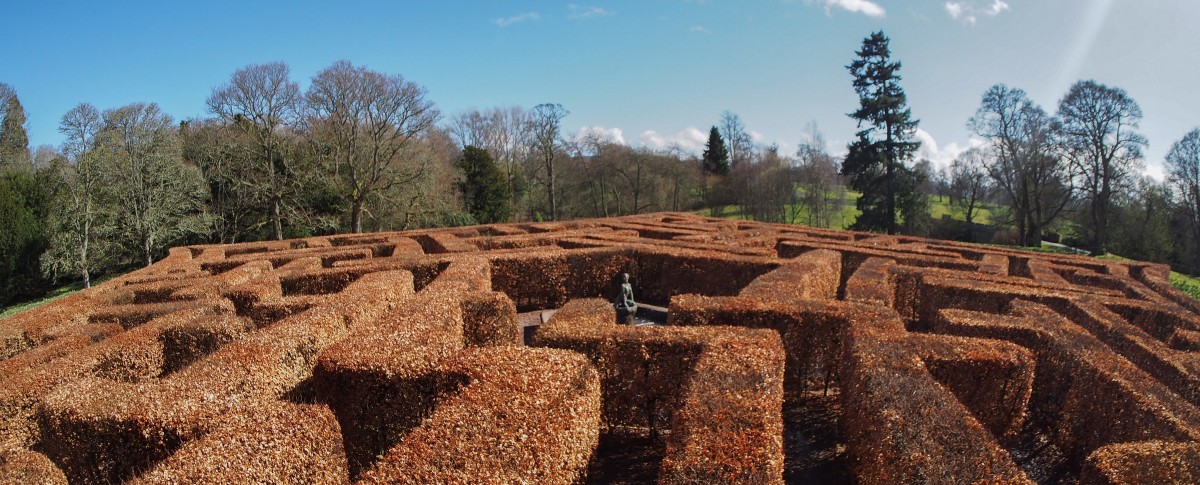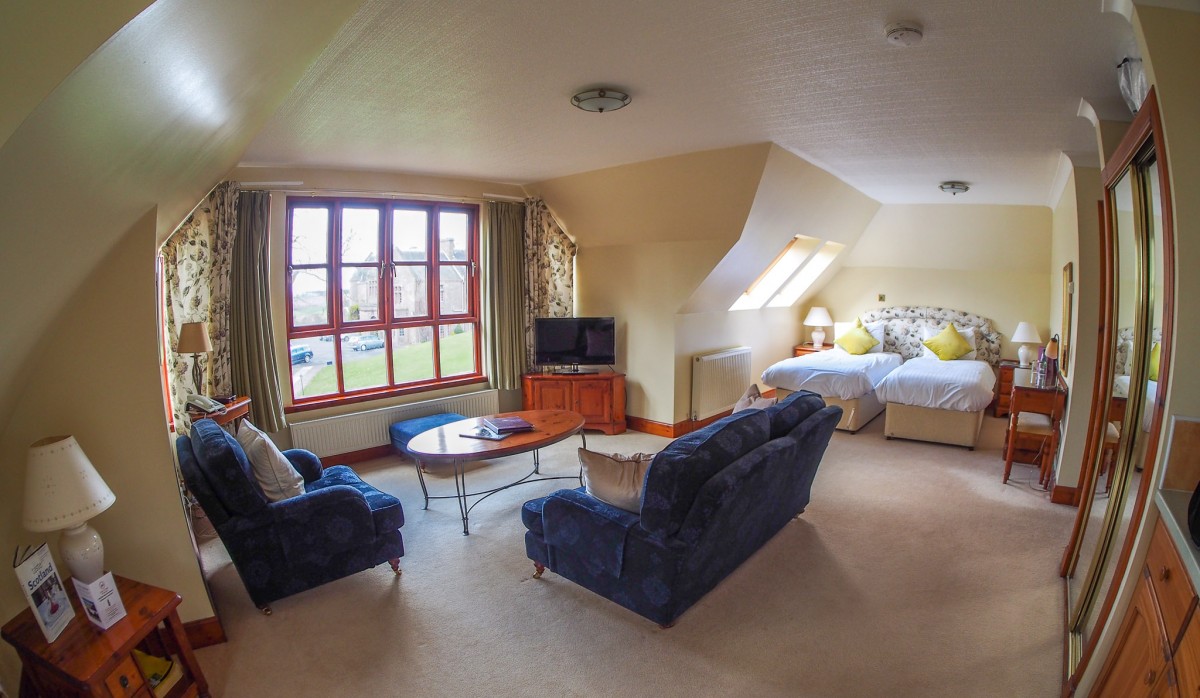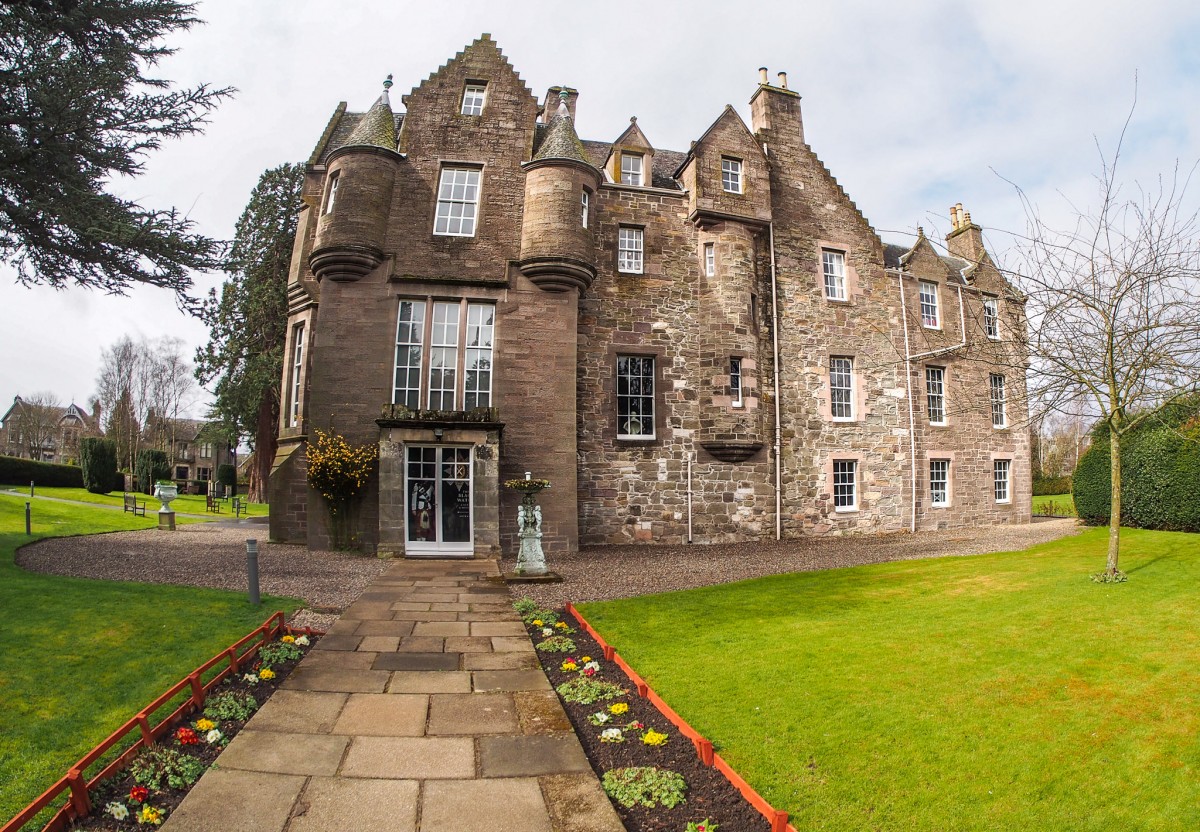Angel-white peacocks, a star shaped maze, rows of colourful cakes, and daffodil petals scattered through the manicured gardens. Sounds like exactly the type of wonderland that Alice would fit right into. Such scenes from Perthshire’s pink palace have not been lifted from the pages of a fiction tale however. Instead this royal residence would sooner be found in a history book, as a significant setting in Scotland’s history spanning over a thousand years.
Scone Palace sits on a glorious estate above Perth, offering over one hundred thousand visitors a year the chance to lose themselves in stories of the past, and quite literally in the aforementioned maze. As my friend and I meandered through the regal interior, I admired the elaborate furnishings and decor while imagining those who walked the rooms before me; Charles II, Bonnie Prince Charlie and Queen Victoria.
Now home to the Earls of Manfield, the palace sits on the site where our Kings were once crowned, starting with Kenneth MacAlpin, the first King of Scotland. Oor Kenny came to Scone in the 9th century, where he declared himself and established a Kingdom. With him, he carried a sacred stone. It was of course, The Stone of Destiny.
For five hundred years, the Stone of Destiny was where each and every Scottish King sat their royal bottoms to be coronated, until this symbolic ceremony ceased forever in 1296 at the hands of Edward I. During his infamous infestation of Scotland, Edward stole the Stone of Destiny from Scone Abbey, taking with him an emblem of Scottish history and pride. The stone remained south of the border for over seven hundred years, until a foursome of fearless students hatched a plan in 1950.
It was Christmas Eve and the young Scots, led by Ian Hamilton, were London bound from Glasgow in a patriotic ploy to steal (or ‘liberate’ as Ian has said) the Stone of Destiny and return it to its rightful home. Students these days are satisfied with acquiring a pint glass or party prop on their escapades, but not these four. They came home from a very long night out with an ancient symbol of Nationalism! Good effort.
Ian and his amigos kept their stone-shaped secret for several months, before wrapping it in a Saltire and poignantly placing it outside Arbroath Abbey; the Declaration of Arbroath was allegedly written here, proclaiming Scottish Independence in 1320. The stone was immediately returned to Westminster, until it was finally brought home officially in 1996 to be housed in Edinburgh Castle, alongside the crown jewels.
After the centuries-long game of ‘Pass the Parcel’ with the stone there are many conspiracy theories which loom over the legends of the stone. Some believe that it is not the original Stone of Destiny, and that us clever Scots pre-empted the theft back in 1296 and hid the real stone, replacing it with a fake. The location of the Real McCoy still remains a mystery; I think I like it that way.
I stood pondering before the replica of the stone at the original crowning place on Moot Hill, until some drops of rain interrupted my thoughts. I sought shelter inside the palace’s coffee shop to indulge in an obligatory scone @ Scone, and the best cheesecake I’ve ever tasted. After a couple of hours enjoying the interior’s exhibits and the glorious grounds, we left Scone Palace and set off in the direction of a country house hotel on a hilltop not too far away. We soon spotted the signs for Murrayshall House Hotel.
Murrayshall is a wee palace in its own right. Built for the Murray family in 1664, the estate is positioned perfectly for scenic view optimisation and guaranteed tranquility. I envisaged it as a lovely wedding venue and was unsurprised to find out that it hosts over 60 weddings a year. The hotel is also a haven for golfers and with two golf courses and a ‘Regional Golf Hotel of the Year’ award, it is quickly a becoming popular alternative to Gleneagles and The Old Course at St Andrews.
For guests like me who are not sporting a veil or a golf cap, the hotel is a wonderful weekend retreat. Exuding classic country hotel charm, the hotel carries an acceptable, and expected, level of ‘twee’. The lounge wore quintessential classy armchairs, a roaring fire and kitsch floral decor. There are forty one bedrooms in the main building and fourteen separate suites, one of which was mine!
The row of suites have the appearance of cute little neighbourhood lodges, with classic streetlights to illuminate the pathway at night. Just a short stroll from the main building, we arrived at the door of our pad. We were in the upstairs suite, a delightful space with a loft-style slanted roof and front facing views of the Perthshire countryside.
This particular suite is in fact the owner’s favourite and I can see why! With twin beds, a comfortable lounge area, a small kitchenette and a large modern bathroom, it’s both stylish and practical. We opened the windows, sank into the sofa and enjoyed the silence; it was a blissful contrast to our city centre homes in Edinburgh.
Dinner that night was served in the hotel’s Old Master’s Restaurant, a classy setting with beautiful big windows and the same consistently serene views. Head Chef Craig Jackson has been recognised four times by Visit Scotland as serving 5* food, and was given the ‘Taste the Best’ award in 2015 thanks to his commitment to serving 90% local produce.
My dinner selections were certainly not calorie conscious; cheese souffle, venison loin and a ‘Plate of Chocolate Textures’. My sweet tooth will obviously tell you that the latter dish was the star of the show. It was amazing! Sous Chef Kevin Duncan - a chef for 15 years, trained by Tom Lewis of Monachyle More - popped out for a chat, and shared his undeniable passion for food. Thanks to the team’s expertise and careful choice of ingredients, my passion for food was nurtured during my stay at Murrayshall. The following morning, after a fantastic breakfast, it was time to entertain my inner history geek again.

We were welcomed to The Black Watch Castle and Museum by a host of friendly staff, including the Archivist Richard McKenzie. We felt very privileged to have Richard take us on a tour of the attraction, imparting his infinite knowledge of the The Black Watch regiment. The regiment was originally established to monitor and pacify the unruly Highland Jacobites, following the rebellion of 1719. Their presence has since been known all over the world, fighting in countless battles and in WWI & WWII. This respected regiment maintain a reputation of bravery and endurance.
I was massively impressed by the museum with its modern aesthetics, attractive exhibits and easily digestible snippets of texts. I was even more impressed by Richard’s ability to condense a three hundred year history and deliver it in a coherent, engaging way. Yorkshire born Richard comes from a background of Archeology and started as a volunteer at the attraction seven years ago, and he became the archivist after five years. He admits to having an interest in military history from a young age and that the first book he was read as a child was the Duke of Wellington’s biography; not your average bedtime story. He developed his knowledge of The Black Watch by immersing himself in the archives and talking to the veterans who frequent the museum. It’s as if he’s absorbed the facts by osmosis!
I appreciated the museum’s efforts in making history accessible, colourful and simple to interpret. The personalised tour from Richard was invaluable, bringing the stories and artifacts to life. I now know why Richard’s favourite exhibit is a stick, and why they have never washed Captain Stewart’s muddy kilt. Just like the day before, I concluded my visit in the cafe, only this time over a bowl of tomato and lentil soup with warm scone bread. It’s safe to say my appetite for food and facts had been thoroughly satisfied.




SCBP
Perthshire's only online magazine